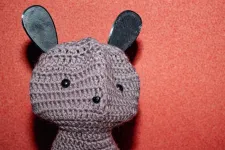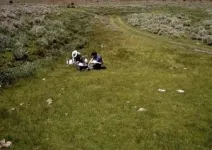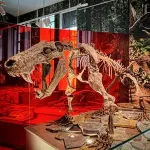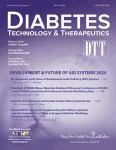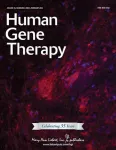(Press-News.org) From smart virtual assistants and self-driving cars to digital health and fraud prevention systems, AI technology is transforming almost every aspect of our daily lives—and education is no different. For all its promise, the rise of AI, like any new technology, raises some pressing ethical and equity questions.
How can we ensure that such a powerful tool can be accessed by all students regardless of background?
Inspired by this call to action, USC researchers have created a low-cost, accessible learning kit to help college and high school students build their own “robot friend.” Students can personalize the robot’s “body,” program the robot to mimic their head posture, and learn about AI ethics and fairness in an engaging, accessible way.
“We’re proposing this open-source model to not only improve education in AI for all students but also to make human-interaction research more affordable for labs and research institutions,” said Shi. “Ultimately, we want to increase access to human-centered AI education for college students and create a pathway to more accessible research.”
To reduce costs and development time for learners, the team customized and simplified Blossom, a small, open-source robot originally developed by Hoffman at Cornell University. Blossom is a common fixture in USC’s Interaction Lab—Shi previously used the robot to design better AI voices for mindfulness exercises, while O’Connell programmed it to act as a “study buddy” for students with ADHD symptoms.
Last year, the duo began to devise ways to use the robot for educational purposes and set to work creating a low-cost, customizable and “human-focused” module that could mirror some of the ways that students will interact with technology in their everyday lives.
The system is outlined in a new study, titled “Build Your Own Robot Friend: An Open-Source Learning Module for Accessible and Engaging AI Education,” presented this week at the AAAI Conference on Artificial Intelligence, education symposium track.
“We believe it is important for students to learn about fairness and ethics in AI in the same way that we learned about math and physics in K-12,” said co-lead author Zhonghao Shi, a doctoral student in computer science who conducts his research in the USC Interaction Lab led by Professor Maja Matarić. “We may not use these subjects every day, but having a basic understanding of these concepts helps us do better work and be mindful of new technologies.”
Supported by the National Science Foundation, the paper is co-lead-authored by Amy O’Connell, a USC computer science doctoral student and Shi’s labmate, and Zongjian Li, a software engineer working with Mohammad Soleymani, a research associate professor at the USC Institute for Creative Technologies. Soleymani and Matarić are co-authors, in addition to Guy Hoffman from Cornell University, and USC computer science undergraduate students Siqi Liu and Jennifer Ayissi.
Hands-on experience
The three-part open-source learning module provides students with hands-on experience and introductory instruction about various aspects of AI, including robotics, machine learning, software engineering, and mechanical engineering. It helps to address a gap in the market for AI education, said Shi and O’Connell.
Currently, pre-built robots, such as the NAO, are unaffordable for schools with limited resources, while educational robot kits, such as LEGO Mindstorms, though affordable, do not adapt to students at different levels.
To make the robot more affordable, they developed strategies to subsidize its cost. In the version of Blossom presented in the study, the materials are created using 3D printers, instead of more costly laser printing. Currently, one of the team’s customizable robots costs around $250 to make. In comparison, a NAO robot runs at around $15,000.
O’Connell, who learned to crochet during the pandemic, designed five new Blossom exteriors and created detailed, easy-to-follow patterns and tutorials for each version, including a baby onesie, knitted and crocheted options, which are all low-cost and customizable.
After constructing their robot friend, students are encouraged to further customize Blossom with, for instance, mechanical eyebrows, color-changing lights, or even an expressive face screen. For O’Connell, creativity has been a crucial part of her own engineering journey.
“Crafting and engineering require similar strengths like counting, planning, and spatial reasoning,” said O’Connell. “By incorporating crafting into this project, we hope to draw in creative students who might not have considered how their skills align with robotics and engineering.”
Understanding ethics and fairness
The system was piloted in a 2-day workshop in May 2023 with 15 undergraduate college students from a local minority-serving institution. Four teams of students constructed Blossom robots following the learning module assembly guide with blank knitted exterior to personalize with accessories. On the second day, the students used pre-trained head pose tracking and gesture recognition models to detect and mimic nodding behaviors from the user.
From post-workshop surveys, they found that 92% of the participants believed that the workshop helped them learn more about the topics covered and all the participants believed that the workshop encouraged them to study more about robotics and AI in the future.
“Equipping users with AI literacy, including an understanding of AI ethics and fairness, is crucial to avoid unintended discrimination against marginalized groups,” said Shi.
In continued work, the team plans to further evaluate and improve the module for high school students and K-12 students. Ultimately, the researchers hope to expand access for students at different educational levels.
“We’re excited to share more about our project with people from around the world,” Shi said. “We want to make sure that people from different kinds of socioeconomic backgrounds have the opportunity to gain an education on AI and participate in the process of improving AI for future use.”
END
How to build your own robot friend: Making AI education more accessible
USC researchers develop new open-source platform to help students build their own low-cost robot companion from scratch
2024-02-23
ELSE PRESS RELEASES FROM THIS DATE:
Advances and future development of automated insulin delivery systems
2024-02-23
A special 13-article supplement to the peer-reviewed journal Diabetes Technology & Therapeutics (DTT) examines the “Development and Future of Automated Insulin Delivery (AID) Systems. Click here to read the supplement now.
Included in the supplement is the article titled “A Peek Under the Hood: Explaining the MiniMed™ 780G Algorithm with Meal Detection™ Technology", by Benyamin Grosman, PhD and his Medtronic algorithm team with co-authors Ohad Cohen, MD, and Robert Vigersky, MD, Chief Medical Officer at Medtronic. James Thrasher, MD “Early ...
Strategic grazing could boost conservation of ‘near-threatened’ sage-grouse
2024-02-23
RENO, Nev. – A multi-agency study, spearheaded by researchers from the University of Nevada, Reno’s College of Agriculture, Biotechnology & Natural Resources and the U.S. Department of Agriculture, underscores the impacts of strategic cattle grazing, particularly on restoring the declining population of the greater sage-grouse bird, a keystone species in the Great Basin region.
Amidst ongoing decline, the U.S. Fish and Wildlife Service acted by listing the sage-grouse for protection under the Endangered Species Act in 2011. This move prompted the Bureau of Land Management to develop a federal conservation plan for the species ...
Complement system response to AAV vector gene therapy
2024-02-23
Recent clinical trials utilizing high doses of adeno-associated virus (AAV) vectors have highlighted a new challenge to AAV gene transfer – activation of the complement system. A new article in the peer-reviewed journal Human Gene Therapy describes how a convergence of AAV-specific, environmental, and patient-specific factors shaping complement responses likely contribute to differential outcomes seen in clinical trials. Click here to read the article now.
Complement responses may contribute to priming of the adaptive immune system or serious adverse events ...
Study suggests people in urban areas with more green space have better mental health
2024-02-23
By Ann Kellett, Texas A&M University School of Public Health
A new study from the Texas A&M University School of Public Health suggests that city dwellers who have more exposure to urban green spaces require fewer mental health services.
The study, published in the International Journal of Environmental Research and Public Health, was conducted by Jay Maddock, Ph.D., Regents Professor of environmental and occupational health at Texas A&M, and colleagues from the Center ...
Zinc discovery holds promise for people with cystic fibrosis
2024-02-23
University of Queensland researchers have identified an opportunity to reduce infections in people living with cystic fibrosis.
Professor Matt Sweet, Dr Kaustav Das Gupta and Dr James Curson from UQ’s Institute for Molecular Bioscience have discovered a fault in the bacteria-killing function of immune cells in people with CF and a potential way to get around it.
CF is a chronic disease in which defects in the CFTR (cystic fibrosis transmembrane conductance regulator) channel cause a build-up of mucus in the lungs, airways and digestive system, leading to ...
Study finds black children in UK at four times greater risk of complications following emergency appendicitis surgery compared with white children
2024-02-23
New research published in Anaesthesia (the journal of the Association of Anaesthetists) shows that for children undergoing emergency surgery for appendicitis in the UK, black children had a four times greater risk of postoperative complications compared with white children. The study was led by Dr Amaki Sogbodjor, from Great Ormond Street Hospital and University College London (UCL), and Professor Ramani Moonesinghe, UCL Division of Surgery and Interventional Science, London, UK and Director, Central London National ...
Webb finds evidence for neutron star at heart of young supernova remnant
2024-02-22
NASA’s James Webb Space Telescope has found the best evidence yet for emission from a neutron star at the site of a recently observed supernova. The supernova, known as SN 1987A, was a core-collapse supernova, meaning the compacted remains at its core formed either a neutron star or a black hole. Evidence for such a compact object has long been sought, and while indirect evidence for the presence of a neutron star has previously been found, this is the first time that the effects of high-energy ...
Study finds guided parent-child discussions are effective at addressing subtle racism
2024-02-22
Study finds guided parent-child discussions are effective at addressing subtle racism
When parents discuss racism with their children, negative biases toward Black people are significantly reduced in both parent and child
EVANSTON, Ill. --- Experts have long pointed out the need for white parents to have conversations that directly address racism with their children to reduce racial bias. But many parents fail to have these crucial discussions.
Psychology researchers at Northwestern University have published ...
Entrepreneurs’ stock losses bruise their businesses
2024-02-22
When a recession takes a bite out of an entrepreneur’s personal stock portfolio, does that person’s business suffer more than those of older and larger competitors?
New research by Marius Ring, assistant professor of finance at Texas McCombs, finds a link between the wealth of small-business owners and the health of their companies during economic downturns. When their stock portfolios lose value, their businesses suffer ripple effects: less financing and curtailed hiring.
“Entrepreneurial wealth follows the ups and downs of economic cycles,” Ring says. “I show that for entrepreneurs whose stock portfolios take a hit, their businesses ...
Copies of antibiotic resistance genes greatly elevated in humans and livestock
2024-02-22
DURHAM, N.C. – Biomedical engineers at Duke University have uncovered a key link between the spread of antibiotic resistance genes and the evolution of resistance to new drugs in certain pathogens.
The research shows bacteria exposed to higher levels of antibiotics often harbor multiple identical copies of protective antibiotic resistance genes. These duplicated resistance genes are often linked to “jumping genes” called transposons that can move from strain to strain. Not only does this provide a mechanism for resistance to spread, having multiple copies of a resistance ...
LAST 30 PRESS RELEASES:
House sparrows in northern Norway can help us save other endangered animals
Crohn's & Colitis Foundation survey reveals more than 1/3 of young adults with IBD face step therapy insurance barriers
Tethered UAV autonomous knotting on environmental structures for transport
Decentralized social media platforms unlock authentic consumer feedback
American Pediatric Society announces Vanderbilt University School of Medicine as host institution for APS Howland Visiting Professor Program
Scientists discover first method to safely back up quantum information
A role for orange pigments in birds and human redheads
Pathways to net-zero greenhouse gas emissions for Southeast Asia
A JBNU–KIMS collaborative study on a cost-effective alloy matches superalloys for power plants and energy infrastructure
New study overturns long-held model of how plants coordinate immune responses.
New AI model predicts disease risk while you sleep
Scientists discover molecular ‘reshuffle’ and crack an 80-year-old conundrum
How stressors during pregnancy impact the developing fetal brain
Electrons lag behind the nucleus
From fungi to brain cells: one scientist's winding path reveals how epigenomics shapes neural destiny
Schizophrenia and osteoporosis share 195 genetic loci, highlighting unexpected biological bridges between brain and bone
Schizophrenia-linked genetic variant renders key brain receptor completely unresponsive to both natural and therapeutic compounds
Innovative review reveals overlooked complexity in cellular energy sensor's dual roles in Alzheimer's disease
Autism research reframed: Why heterogeneity is the data, not the noise
Brazil's genetic treasure trove: supercentenarians reveal secrets of extreme human longevity
The (metabolic) cost of life
CFRI special issue call for papers: New Frontiers in Sustainable Finance
HKU Engineering scholar demonstrates the smallest all-printed infrared photodetectors to date
Precision empowerment for brain "eavesdropping": CAS team develops triple-electrode integrated functional electrode for simultaneous monitoring of neural signals and chemical transmitters during sleep
Single-capillary endothelial dysfunction resolved by optoacoustic mesoscopy
HKU three research projects named among ‘Top 10 Innovation & Technology News in Hong Kong 2025’ showcasing excellence in research and technology transfer
NLRSeek: A reannotation-based pipeline for mining missing NLR genes in sequenced genomes
A strand and whole genome duplication–aware collinear gene identification tool
Light storage in light cages: A revolutionary approach to on-chip quantum memories
Point spread function decoupling in computational fluorescence microscopy
[Press-News.org] How to build your own robot friend: Making AI education more accessibleUSC researchers develop new open-source platform to help students build their own low-cost robot companion from scratch
